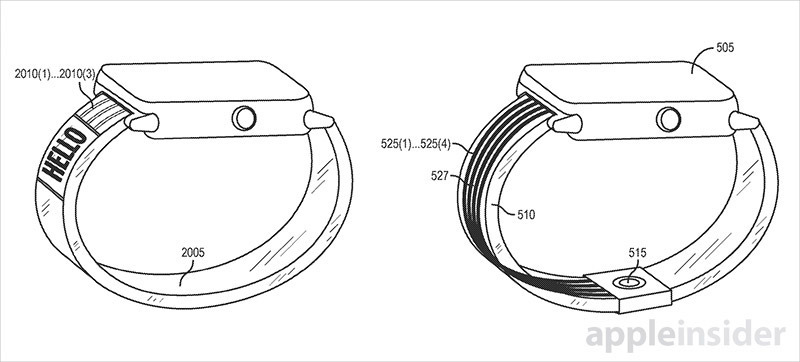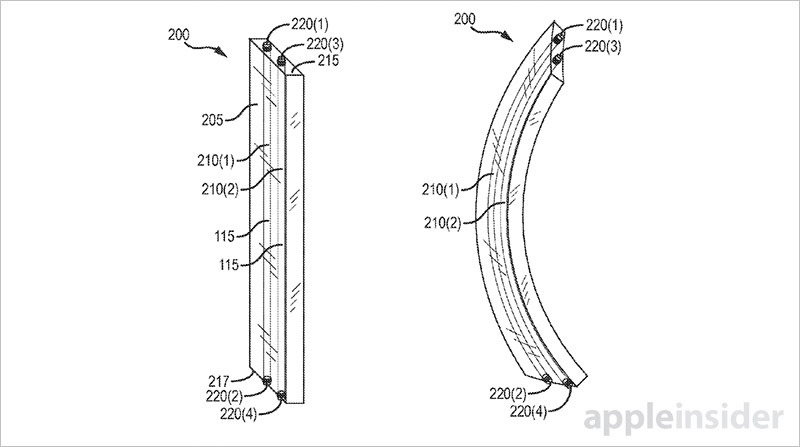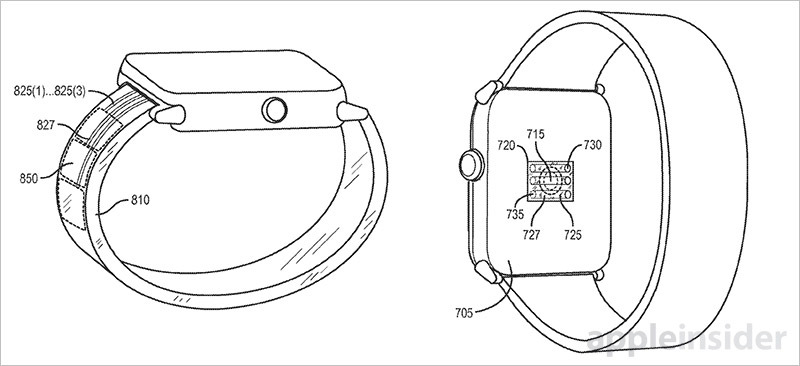Apple investigating 'active fluids' for wearable displays, connectors, sensors and more
Apple in a patent application published on Thursday describes a versatile technology that applies optically transparent shells filled with conductive fluid — transparent, opaque or state-changing — as flexible interconnects, interactive displays and windows for environmental or biometric sensors, among other implementations.
As published by the U.S. Patent and Trademark Office, Apple's application for "Transparent structures filled with electrically active fluid" deals with electrically active fluids, defined as a fluid "that responds to an applied voltage by conducting current or changing crystalline structure." Such fluids can serve a range of uses depending on their specific properties and deployment casing.
For example, in some embodiments, a transparent fluid encased in a transparent shell with appropriate electrodes or plugs can provide see-through components that are also electrically conductive. Other designs might incorporate opaque fluids inserted into flexible substrates to create a conductive connector spanning a point of high mechanical fatigue, like the lugs or band of a smartwatch.
Further embodiments employ fluids containing crystalline structures that, upon exposure to an applied voltage, change state and thereby color. Obvious applications include flexible interactive displays, though the technology might also be applied to configurable buttons and other input/output mechanisms.
Apple's document specifically refers to the implications active fluid technology might have on wearable devices. In one example, a smartwatch uses flexible channels filled with conductive fluid to communicate with a heart rate sensor positioned at the end of its wristband. Fluid-filled cavities provide greater resistance against wear and tear than wires and prove more reliable than conductive fabrics like those used in iPad Pro's Smart Keyboard.
Interestingly, during the early stages of Apple Watch development engineers pitched the idea of installing the pulse sensor in the device band because the underside of users' wrists yield more accurate readings than the top. The company ultimately opted for a design integrated with Watch's chassis, citing current design trends and plans to market interchangeable bands.
In yet another embodiment, a transparent window with transparent electrically conductive fluid channels covers an embedded optical sensor. In this case, fluid components might be configured to be transparent only to the bandwidth of the optical sensor, allowing it to transmit and receive light.
Another use case scenario describes integrating the technology into a transparent smartwatch band. Since the fluids can contain conductive ink or other particulates, and are communicatively connected to a host device, substantially transparent elements are able to respond to user touch. For example, the transparent band might change color in response to user touches, swipes or presses, offering visual confirmation of system commands. Alternatively, the device itself is able to change the state, or color, of the band, providing users with an effective visual notification system for incoming calls and other alerts.
The document goes on to detail the benefits of active fluids as transparent electromagnetic interference shielding, aesthetically appealing device antennas, cooling systems and more. Other embodiments include considerations for mobile devices like iPhone and fluid flow monitoring solutions.
Apple's active fluid patent application was first filed for in June 2015 and credits Tyler S. Bushnell, Samuel Bruce Weiss and Benjamin J. Kallman as its inventors.
 Mikey Campbell
Mikey Campbell













 Wesley Hilliard
Wesley Hilliard
 Andrew Orr
Andrew Orr



 Amber Neely
Amber Neely

 William Gallagher
William Gallagher







